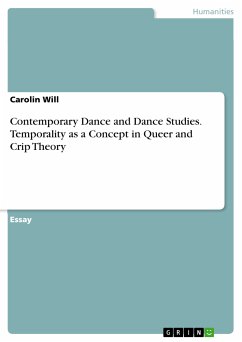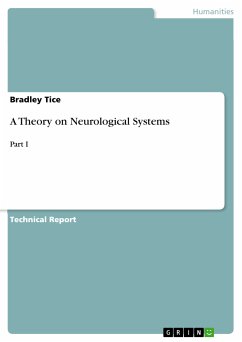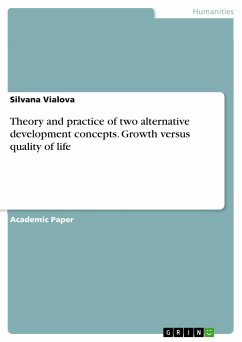
Contemporary Dance and Dance Studies. Temporality as a Concept in Queer and Crip Theory (eBook, PDF)

PAYBACK Punkte
0 °P sammeln!
Essay from the year 2020 in the subject Philosophy - Practical (Ethics, Aesthetics, Culture, Nature, Right, ...), grade: 15, Leuven Catholic University, language: English, abstract: This paper answers two questions about contemporary dance and its relation to the body and mind. Dance studies emerged in the 1980s as a reaction against dance history. Many scholars critically questioned the 'master narrative' of Modernism that is often advanced in dance history. The essay "The Ballerina's Phallic Pointe" by Susan Leigh Foster can be seen as a good example of this critique. How does Foster react a...
Essay from the year 2020 in the subject Philosophy - Practical (Ethics, Aesthetics, Culture, Nature, Right, ...), grade: 15, Leuven Catholic University, language: English, abstract: This paper answers two questions about contemporary dance and its relation to the body and mind. Dance studies emerged in the 1980s as a reaction against dance history. Many scholars critically questioned the 'master narrative' of Modernism that is often advanced in dance history. The essay "The Ballerina's Phallic Pointe" by Susan Leigh Foster can be seen as a good example of this critique. How does Foster react against the dominant conceptualization of contemporary ballet? Secondly the essay answers the question, why temporality is an important concept in both queer and crip theory. It explains both theories and their differences. Furthermore, it answers the question, whether crip temporality can be an interesting concept to analyse disability dance. To illustrate results the essay analyses Daniel Linehan's "Body of Work" in relation to crip time.
Dieser Download kann aus rechtlichen Gründen nur mit Rechnungsadresse in A, B, BG, CY, CZ, D, DK, EW, E, FIN, F, GR, HR, H, IRL, I, LT, L, LR, M, NL, PL, P, R, S, SLO, SK ausgeliefert werden.













